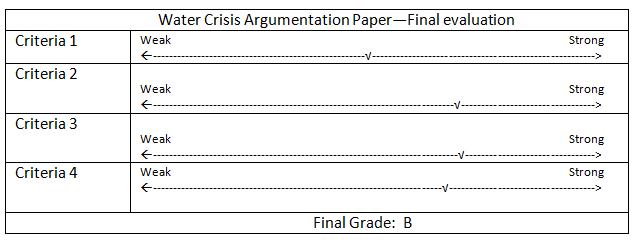|

Jane Conzett |
|

Lara Dorger |
When we become teachers, we understand that we will provide
learning experiences for students and give them feedback about their
performance. We know that this feedback helps students develop their
skills and informs them of the quality of their achievement. In recent
years, however, an even greater focus on student performance and
achievement has increased assessment expectations of teachers
everywhere. Besides giving formative and summative feedback to students
on how well they meet objectives, teachers must now
- observe and measure students’ ability to meet learning outcomes and
- report and document outcomes and grades to programs, schools, and accrediting bodies.
Focusing on student achievement is important and laudable, and
so today’s “culture of assessment” is likely here to stay. Yet for
teachers in intensive English programs (IEPs), whose classes often meet 5
days per week and whose curricula are ambitious and extensive, these
increased reporting and documentation requirements can become
overwhelming. Students need and deserve timely feedback, but busy
teachers have finite time and energy for additional
documentation.
In our IEP at a university in the midwestern United States, we
began in recent years to feel overwhelmed by the increasing
documentation load. The “intensive” in intensive English program took on
a new meaning for instructors, and we had concern that constant
measurement and evaluation by teacherstook students out of the learning
equation, making them less independent. We decided to devote an
in-service day to assessment issues, and after discussion the faculty
developed our program’s Assessment Vision. In our ideal world, students
receive frequent and timely feedback from multiple sources, and
instructors grade and assess enough to document students’ achievement of
outcomes. In addition, instructors strike a balance in the freedom of
assessment, using as appropriate response, assessment, evaluation, or
grading (Tschudi, 1997). Finally, assessment and evaluation is a
responsibility that is shared by both the teacher and the
student.
As we worked to achieve our vision, we took specific steps:
1. Define Expectations for Frequency of Assessment
How often should we measure whether students meet learning
outcomes? Unless expectations for frequency of assessment are defined by
a program, teachers may be overassessing for their documentation,
leading to stress. At our in-service day, we had a group discussion and
reached consensus about assessment frequency for our specific program
and for our specific learning outcomes. This gives all faculty—both new
hires and senior instructors—benchmarks for assessment frequency.
Focusing our definition on outcomes puts emphasis on student learning,
not on what teachers “do” in the classroom. Here is one
example:
Intermediate-Level Outcome: Student will be able to write a
short essay with rudimentary organization (introduction, body, and
conclusion)
Assessment Type: Program rubric
Frequency: 3-4 times per semester
By setting specific expectations for frequency, we avoid the
possibility that instructors might be underassessing or overassessing.
By defining “enough,” we can prevent instructor overload.
2. Share Ideas and Models for Assessment Types
Great ideas for dealing with the grading load may be close at
hand from your own colleagues. Another agenda item at our in-service day
was to brainstorm and share models for assessment types for all of the
subjects we teach. Then we selected from this list assessment types that
documented observable and measurable outcomes, that saved time, or that
promoted students’ independence and ability to self-assess.All of these
criteria were important to us. Some of the ideas in this article were
gleaned from our program’s meeting.
3. Adopt Technology
Technology can help teachers handle the grading load. In our
IEP, we have used freeware and also programs licensed by our university
to assist us with grading, reporting, and documentation. Engrade is a free online
grade book program we have adopted. ¨Instructors can record grades,
students can see them in real time, and—most significant for us—we can
tag assignments with standards that document specific outcomes. Turnitin and its companion
program, GradeMark
allow us to check for plagiarism and originality; they also allow
instructors to drag and drop their comments onto uploaded student essays
from a customizable comment library. Instructors can also set up their
own rubric in GradeMark or import Common Core rubrics to assess writing. Jing is a
freeware program that allows instructors to make short screencast movies
with audio. An instructor can open a document sent electronically from a
student and use Jing to highlight problem areas while making voice
commentary to explain the issues. Sending the student a link to the
screencast means paperless grading. Camtasia,
the paid version, has more features and capabilities. Using Blackboard, Moodle, or similar learning
environments can also help instructors manage their grading loads when
testing applications are incorporated in the setup.
Technology can also be used to outsource some of the grading
that instructors have to do. Online textbook ancillaries are
increasingly common, and textbook publishers are moving some of their
workbooks online. Intentional adoption of these supporting ancillaries
can lighten the checking and grading responsibilities of teachers and
may be motivating to students.
4. Use Multiple Modes of Assessment and Feedback
Some of the pressure on teachers in today’s culture of
assessment is the time factor—getting feedback to students quickly. The
following strategies can decrease pressure on instructors to “mark and
return” students’ work to them, yet still provide them with timely
feedback:
- Special scratch-off answer sheets, IF-AT (Immediate Feedback
Assessment Technique). These can be used for clear multiple-choice
tests. Students know the correct answer immediately, so instructors have
more time to record scores in the grade book. Anecdotally, students
seem to answer with greater consideration and care. These can also be
used for group tests on which students share a grade, encouraging
greater discussion and critical thinking. IF-AT answer sheets are
available from Epstein
Educational Enterprises.
- Projecting answers immediately after a test or quiz, with PowerPoint or a document camera.
- Online quizzes (with Engrade, Blackboard, etc.). Quizzes are
automatically scored and uploaded to the grade book. These might be best
reserved for low-stakes evaluation and review.
- Rubrics for observable outcomes. Rather than always marking
up and correcting student work, instructors can focus on one outcome and
record whether students met this specific outcome. These are especially
useful for in-class work. Example:
Observed Outcomes Chart

- Portfolios: Items are not formally assessed until students submit a “best of” example.
- Fluency journals (graded: accept/revise): Students gain
experience as writers and spend important time on task without requiring
detailed marking by the instructor. Students can also later revise a
piece of writing in the journal as a graded essay.
- A summative continuum: After a student submits a first draft
and receives formative feedback according to a specific rubric, final
feedback can be more summative. Example:
Summative Continuum Rubric

- Oral feedback: Instructors can do this in person or with a recording.
- On-the-spot grading: Useful for oral presentations. With a
well-designed rubric, instructors evaluate during class, while students
are speaking.
- Audio and video recordings: Students can view and self-assess with a checklist or rubric
prior to the instructor’s assessment. This is very powerful feedback,
and recordings are also documentation of outcomes.
5. Stack the Deck for Student Independence and Responsibility
The last thing we want to hear students say is, “I haven’t
worked on this anymore because I haven’t received your corrections on my
first draft yet.” Ensuring that students are doing their own part in
achieving outcomes is also a goal of those who wish to “handle the
grading load.” Consider trying the following:
- In a class that focuses on note taking, assess students’
lecture notes every other chapter. Students self-assess on the other
chapters.
- Require multiple drafts of an assignment prior to submission
for final evaluation (giving process points along the way). This can
result in a better final product to grade and evaluate.
- Require students to assess their own work before submission,
with a checklist or rubric. They can include things as basic as “Is your
paper double-spaced? ___yes ___no. Is your Reference list alphabetized?
___yes ___no”—or anything you find yourself correcting over and
over.
- Require students to assess themselves with the assignment
rubric and attach it to the final draft when submitting it. The rubric
can have two columns: one for students, one for the teacher.
- If you do peer editing, support the peer editors with a
checklist to guide them. Have peer editors focus on big-picture ideas
and support, and reserve the grammar feedback for the
instructor.
- Develop a program-wide editing checklist, if you use editing
symbols in feedback, so that students become familiar with them and with
the meta-language.
All teachers share the goal of wanting students to learn and
improve. Documenting this student learning beyond simple grades in
today’s culture of assessment may be time-consuming, but it can be done.
By defining expectations for frequency of assessment, sharing ideas for
assessment collaboratively, adopting technology, using multiple modes
of assessment and feedback, and encouraging student independence and
responsibility, IEPs can strike a balance in grading and assessment.
Teachers can document student learning outcomes as they “handle the
grading load.”
REFERENCES:
Tschudi, S. (Ed.). (1997). Alternatives to grading
student writing. Urbana, IL: National Council of Teachers of
English.
Jane Conzett is the director of the Intensive English
Program at Xavier University, in Cincinnati, Ohio.
Lara Dorger is a longtime Instructor in the Intensive
English Program at Xavier University. |

